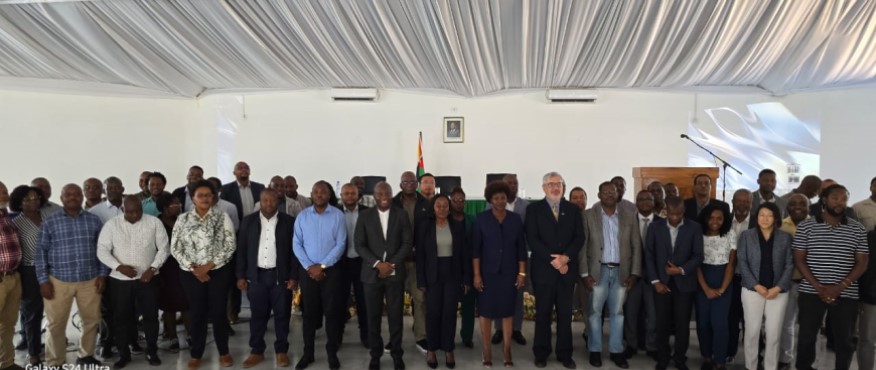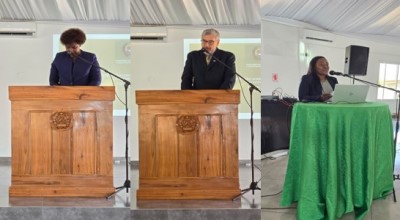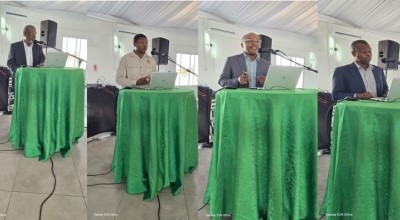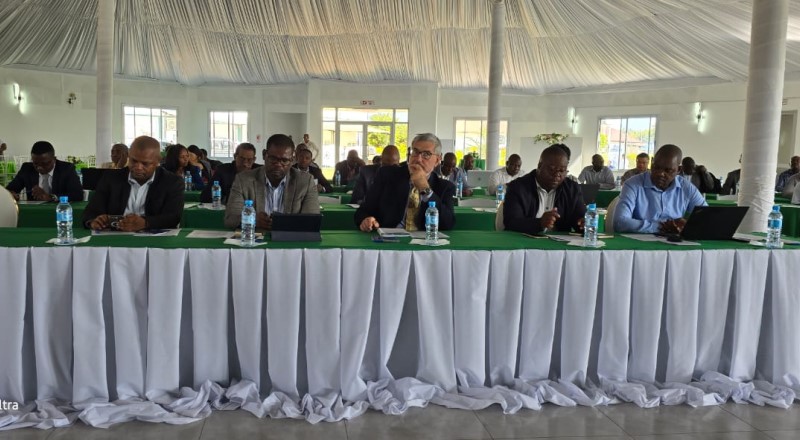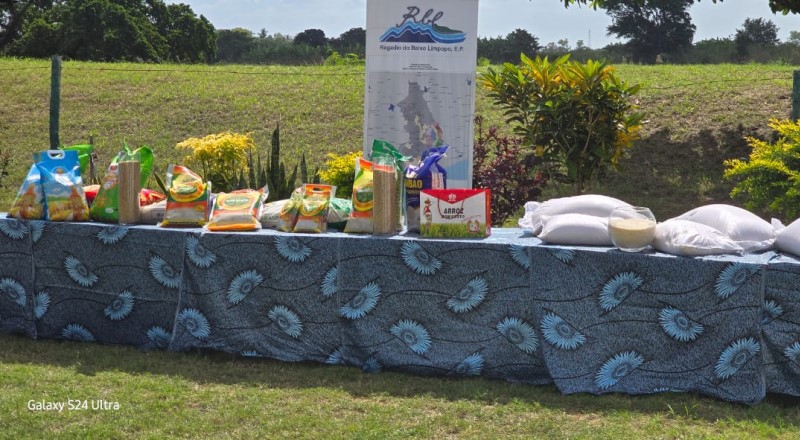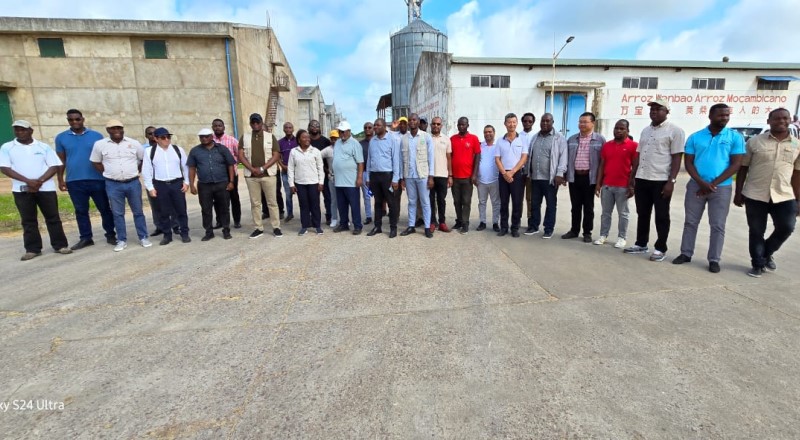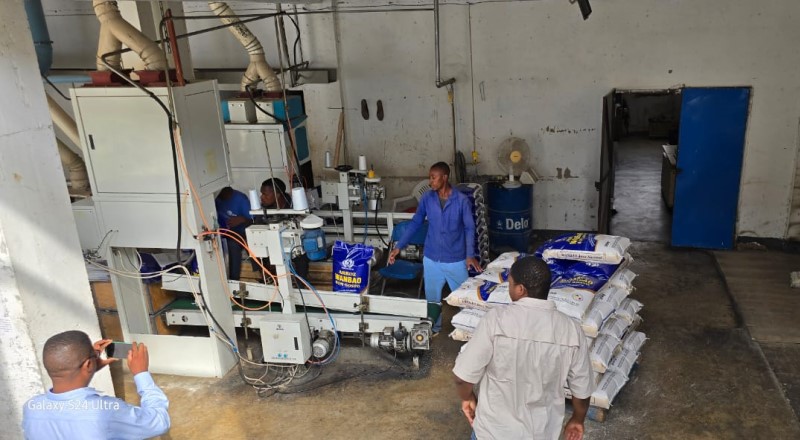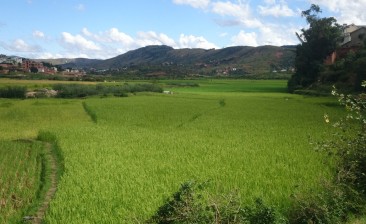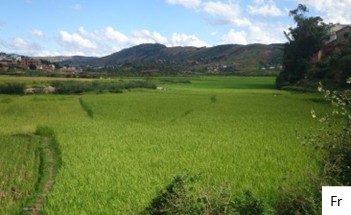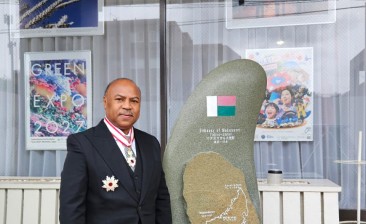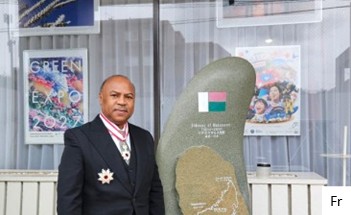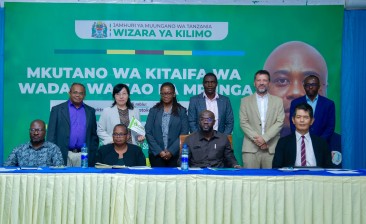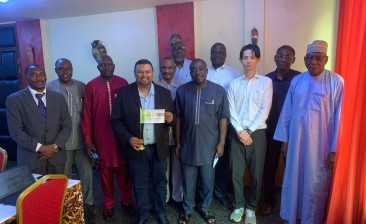Mozambique, April 2024
Annual Rice Sector Review Meeting (ARSRM)
Background
The Government of Mozambique revised its NRDS in October 2022 to align it with guidelines provided by CARD for Phase 2. The revised NRDS2 identified seven priority areas (Research and Extension, Seed, Fertilizers and pesticides, Mechanization, Irrigation, and water management, Agro-processing and Quality improvement of grain, and Access to Finance and Markets), for the development of the rice value chain. This was followed by the development of new concept notes and contacts with Development Partners for fund mobilization. In 2023 the Task Force, with financial and technical support from JICA and CARD Secretariat, commissioned a Baseline Study for Monitoring and Evaluation of NRDS2 indicators.
With the new NRDS, Baseline Study, and Concept Notes in place, the Task Force organized the ARSRM on the 18th and 19th of April 2024 to reflect on the achievements, good practices, and challenges, of the rice subsector for the 2022/23 agricultural season across the entire rice value chain and plan for the season (2023/24).
This ARSRM was an annual meeting that brought together all stakeholders interested in the rice value chain including farmer’s representatives, seed producers, and service providers such as equipment (for land preparation, harvesting, and milling factories) inputs (seed, fertilizers, and pesticides), research and extension services, commercialization, donors (AfDB, AGRA, IFAD, JICA, WB) and development partners (FAO and IRRI) and South-South Cooperation (Brazil). The objective of the meeting was to reflect on the good practices and challenges of the rice sub-sector throughout the rice value chain and plans for the next cropping season. Specifically, this meeting evaluated the indicators of the activities carried out in the 2022/23 cropping season, shared information from different cooperation partners on successful experiences and practices focussing on the transfer of rice production technologies, and, discussed mechanisms for partner participation and collaboration in the areas of agricultural mechanization, seed chain agrochemicals, research, extension, and the linkages with the markets.
Methodology
The ARSRM started with welcome speeches from the Administrator of the LIimpopo district on behalf of the Governor of Gaza province, followed by the Ambassador of the Federative Republic of Brazil. The meeting was officially opened and chaired by the National Director of the Development of Small-Scale Farming. The two-day meeting consisted of presentations and discussions of the general overview of the CARD Initiative, the presentation of the Task Force annual report (2022/23 cropping season), the revised NRDS and respective concept notes, the experience of agricultural good practices, and field visits to farmer’s fields and milling factory in Xai-Xai district.
Presentations made during the ARSRM
- CARD Regional Consultant. Overview of the CARD initiative, nature, structure, objectives, modus operandi, and achievements;
- NRDS Focal Point annual report. 256,926 tons were produced in the cropping 2022/23 against 245,792 tons in 2021/22 and self-sufficiency was only 18%;
- Revised NRDS2. NRDS2 envisages the concentration of activities in 6 provinces (Maputo, Gaza, Sofala, Zambezia, Nampula, Cabo Delgado) covering 1,343,680 producers by 2030 and increasing production to around 1,489,344 tonnes by 2030.
- Field visit. Farmer’s field and milling factory in Xai-Xai to see experiences of good practices;
- Research. In the last 10 years, 6 varieties of rice have been released for the rainfed lowland ecosystem and 4 varieties for the irrigated ecosystem.
- Experience with good practices. Low Limpopo Irrigation Authority (RBL) and a private company (Wanbao) come together to assist farmers with water management and the provision of equipment and inputs (land preparation, seed, fertilizer, and pesticides). With this arrangement, farmers obtained an average yield of 5.9 tons/ha in Gaza province. In the Zambezia and Nampula provinces, FAO works with seed multipliers and seed inspectors, and this seed is entered into the voucher system. With this system, farmers can acquire inputs from local agro-dealers at affordable prices. FAO is endeavoring to expand geographical coverage to other provinces under the implementation of NRDS2.
Visit to farmer’s field and milling factory in Xai-Xai
On the second day, the participants visited some rice fields to see a model of linkages between farmers and service providers. In this model, the terms and conditions are established in a contract signed between the parties before the commencement of the planting season. The contract includes the technology to be used (land preparation and paddling, variety, fertilizers, herbicides) and the price of paddy after harvesting. The farmer owns the land and takes care of crop husbandry. At the end of the season, calculations are made to understand the profit for the farmer after deducting all the expenses incurred under the tripartite contract: Farmer-Wanbao-RBL. The processed rice is then packed with brand name and sold mainly in Xai-Xai and Maputo cities.
Closing Remarks
In her closing remarks the National Director of the Development of Small-Scale Farming commended the efforts and contributions made by all participants as well as the commitment of Development Partners in continuous support of the rice industry in Mozambique and ended by calling on all stakeholders to work as a coordinated team, seeking synergies in the implementation of NRDS2 to achieve rice self-sufficiency.
The Director recognized the commitments made by donors for the implementation of new projects under NRDS2 with specific mention to AGRA who agreed to embrace the areas of mechanization, seeds, police reforms, and markets; IFAD who agreed to engage in rural finance (involving commercial banks), mechanization and irrigation infrastructures; and African Development Bank who has initiated the design of an overall rice value chain project covering Nampula, Sofala and Zambezia provinces.
Meeting with NRDS Task Force Members and Way Forward
This was a side meeting with NRDS TF members to present and discuss the methodology of filling out the new template for the collection of Monitoring and Evaluation (M&E) indicators and guide them about the interpretation of each of the 13 indicators. During the discussion, the TF members agreed that all indicators can be gathered through secondary data and they will update the indicators for the next ARSRM planned to take place on September 2025. The side meeting also discussed the next steps as follows:
| No | Actions | Timeline | Responsibility |
| 1 | Follow-up meeting with JICA for the presentation of CN and lobbying for funds | April 22, 2024 | Focal Person and Task Force |
| 2 | Follow-up meeting with WB for the presentation of CN and lobbying for funds | April 23, 2024 | Focal Person and Task Force |
| 3 | Preparation of detailed CN as requested by AGRA on mechanization, markets, and seeds | April 30, 2024 | Focal Person and Task Force |
| 4 | Elaboration of rice value chain project for Nampula, Sofala and Zambezia in collaboration with AfDB experts | April-June, 2024 | Focal Person and Task Force |
| 5 | Follow-up meeting with FAO for the presentation of CN and lobbying for funds | May 6, 2024 | Focal Person and Task Force |
| 6 | Work with the Brazilian rice mission to develop projects on agricultural mechanization, seed chain, agrochemicals, research, extension, and the link with the markets; | 12 to 16 August. 2024 | Focal Person and Task Force |
| 7 | Follow-up preparation of nationwide value chain Project with JICA | Up to December 2024 | Focal Person and Task Force |
| 8 | M&E data collection in preparation for the next ARSRM in 2025 | August 2025 | Provincial Focal Points |
| 9 | Convene the Annual Rice Sector Review Meeting | September 2025 | Focal Person and Task Force |
